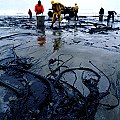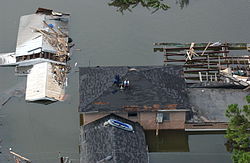Environmental racism



Many countries make rules to protect the environment. These rules can be laws, guidelines, or regulations. Ideally, these rules affect all groups in society in the same way. When this is not the case, and one group or community is affected more than the others, this is known as environmental racism. As is common with racism, the groups are defined based on race, or skin color; sometimes on income.[3] Very often, all the people decide on these rules. When some groups are excluded from the decision-making process, this is also known as environmental racism.
Benjamin Chavis first used the term, in the 1980s. At the time, he was a leading member of the Civil rights movement in the United States. The movement found that when a new landfill was constructed, minorities such as hispanics and black people were affected more often than the white people. The explanation given was the difference in income - hispanics and black people often earn less than white people. A study of 2007 showed that this explanation is too simple and that there are more complex patterns at play.[4] The study also showed that environmental racism occurs in almost all bigger cities in the United States.
The term was later used to describe the situation in the Niger delta, and in Western New Guinea.
Environmental justice is a term that started about the same time; it focuses more on distributing the benefits and burdens of environmental policies equally in society.
Environmental Racism Media
People protesting the water crisis in Flint, Michigan, which disproportionately affected people of color and low-income communities
Dust pollution from drilling contributes to high amounts of toxic air inhaled.
Kamala Harris speaking about environmental justice in June 2020
People on the roofs of their houses avoiding the flood after Hurricane Katrina
References
- ↑ Copland, Liesl; Kamen, Jon; Berlinger, Joe. 2009. Crude: The Real Price of Oil; United States. Entendre Films, Red Envelope Entertainment.
- ↑ "Ecuador: Discrimination and Environmental Racism Against People of African descent Must End, Say UN Experts". United Nations Office of the High Commissioner.
- ↑ Bullard, Robert (2012-05-04). "The Legacy of American Apartheid and Environmental Racism". Journal of Civil Rights and Economic Development. 9 (2).
- ↑ "Environmental Racism Study Finds Levels Of Inequality Defy Simple Explanation". ScienceDaily. Retrieved 2021-04-11.





